Historic ceramic tiles for floor and wall have different cleaning techniques. Also keeping the protecting layers has different specific methods.
Before beginning any work more complicated than routine maintenance or a very simple repair on a significant historic ceramic tile floor or on any historic tile floor where serious damage has occurred, it is recommended that a professional ceramics conservator, a historical architect, an architectural historian, or a chemist with specific knowledge and experience in this field be consulted.
This is because all of these individuals have specific knowledge and experience in this field.
This will ensure that any and all future work, whether it be routine maintenance or more involved and specialized repair and restoration, is carried out in accordance with The Secretary of the Interior’s Standards for the Treatment of Historic Properties. This applies to any and all types of repair and restoration work.
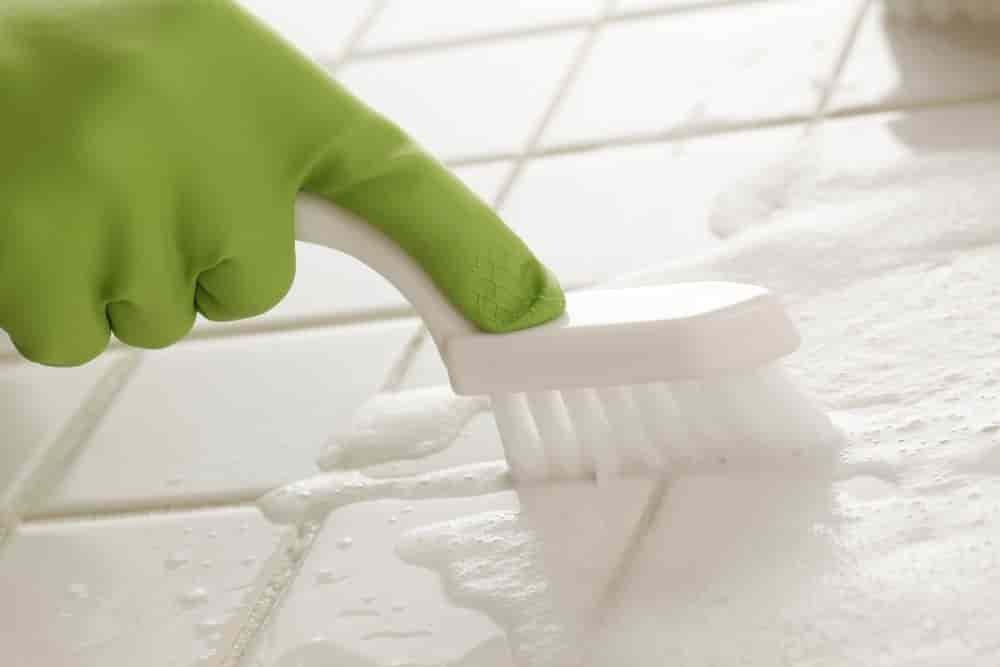
Historic Tiles Cleaning Techniques
Ceramic tiles, both historic and modern, in their most basic form, are a sort of flooring that is both functional and low-maintenance, which have different cleaning techniques.
Even glazed tiles are susceptible to being dirty and discolored, particularly in high-traffic areas or places that are more likely to be stained by grass, oil, or fat. This is especially true in locations where dust and dirt are constantly being tracked in.
The majority of the time, cleaning ceramic tile floors is not a very tough task; nevertheless, cleaning extremely dirty parts may be difficult or even impossible. Always begin the cleaning process with the mildest manner possible, which could be something as simple as using warm water.
To keep grit from accumulating, you should routinely remove it from the floor by sweeping, dry mopping, vacuuming, or moist mopping. It is possible to clean tiles with the vast majority of home floor cleaners that do not contain soap, including the cleaners that are marketed expressly for cleaning ceramic tile floors.
Always test a small, inconspicuous area first to ensure that a cleaning or stain-removal solution is safe to use before applying it to the entire surface.
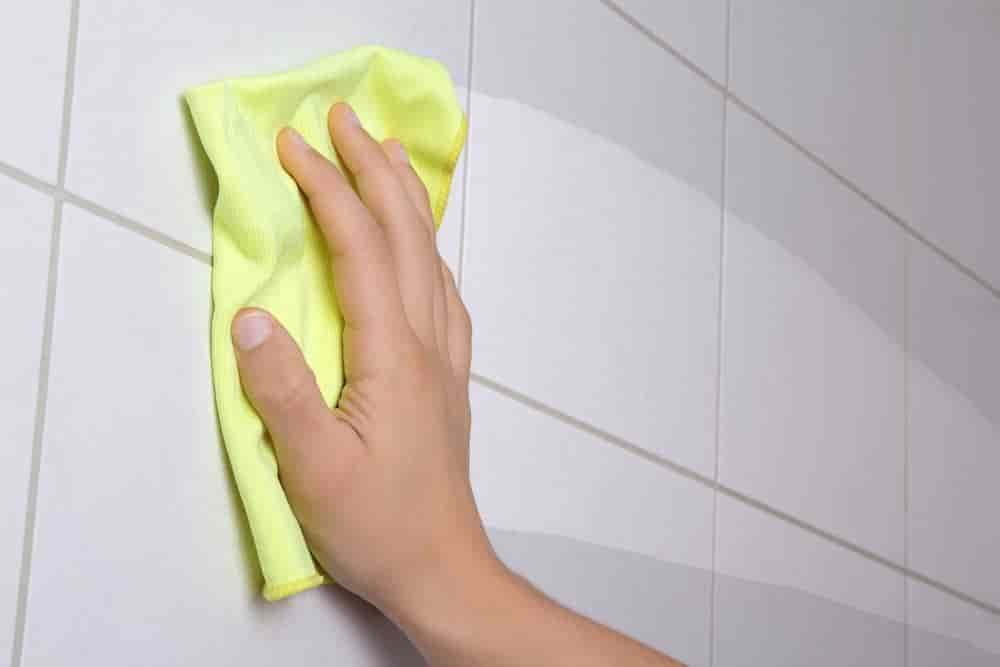
Because they can damage the protective surface and wear away the beautiful design, abrasive cleaners (including powdered cleaners and even “mildly” abrasive creams) and mechanical equipment should not be used on ceramic tile floors.
Ceramic tile floors are extremely durable and can last for decades with proper care. Products that are acidic shouldn’t be used to clean ceramic tile floors as a general rule since these products can damage the delicate silicates that are in the glazes.
There are a number of acid-based cleansers that might be appropriate, despite the fact that even these must be used with caution.
These cleansers were intended specifically for cleaning and removing coatings from ceramic tile floors. It may be necessary to employ an acid-based cleaning solution in certain circumstances in order to remove discoloration or stains caused by lime or cement mortar.
However, it should be tested out beforehand, used with caution, and only on a thoroughly wet tile floor from which excess water has been drained. This is the only surface on which it should be used.
Before washing ceramic tile floors with any kind of cleaner, it is a best practice to first wet the ceramic tiles with water.
The porous tile is completely covered with water, which acts as a barrier between the tile and any chemicals or other cleaning agents that may otherwise penetrate inside. Always give the floor tiles a thorough washing when you’ve finished cleaning them.
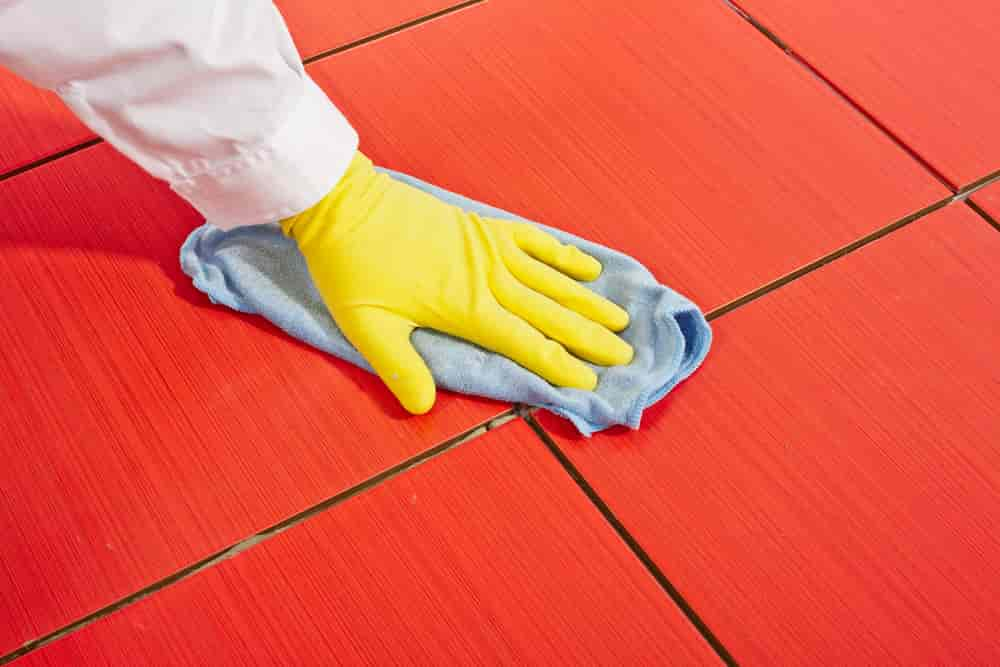
Plastic pot-scrubbers could be effective for loosening and removing surface debris without harming the glazed or vitrified surfaces of tiles. This can be accomplished with the use of plastic. Sometimes, the only thing that will get rid of stubborn asphalt or oil stains, scuff marks, or soiling is good old-fashioned ammonia or one of those popular household spray cleaners created specifically for cleaning tiles in the kitchen or bathroom.
In the event that it is required, tiles that have been pre-wetted can be given a careful application of solvent; however, the solvent should not be left on the surface for an extended amount of time because this could result in discoloration.
If at all feasible, the best method for removing a stain should always be selected after the stain has been discovered in order to provide the best possible results.
To get rid of organic growths such as mold or mildew, you can use either a weak solution of household bleach and a neutral household detergent or a weak solution of tri-sodium phosphate with a concentration of between 5 and 10%. (TSP).
After using either of these treatments, it is possible that the floor will need to be scrubbed with a brush made of natural bristles or nylon, and then it will need to be rinsed with water that is clear.
Even if the bleach solution is diluted, ceramic tile flooring should not be left exposed to it for more than a few minutes at a time. This is because the alkali in bleach can cause the formation of a white efflorescent coating.

Efflorescence, which is a yellowish haze composed of water-soluble salts, has the potential to discolor and streak the tile, and it also has the potential to cause some minor spalling around the joints.
When performing routine maintenance on a ceramic tile floor, the first step in the process should always be vacuuming the floor to remove any loose debris and grit.
After that, you can apply a moderate cleaning agent to the floor and let it sit there for ten to fifteen minutes without letting it dry on the tiles before moving on to the next step. Scrubbing the most contaminated sections of the tile using a brush made of natural bristles or nylon can help remove debris from the surface of the tile.
After that, you should give the floor a thorough cleaning, preferably twice, using water that is clean and clear, and then dry it with terrycloth towels, if necessary.
Always follow the instructions provided by the manufacturer when using any and all cleaning products that are proprietary.

Tiles Keeping Protective Layers
Traditional ceramic tiles typically did not receive any further protective coatings or treatments other than wax for keeping their layers.
This was the case the majority of the time. Linseed oil has a propensity to attract dirt and darken with time; as a result, certain encaustic tile floors were coated with linseed oil in the 19th century; however, this method is not recommended for usage today.
The reason for this is that linseed oil has a tendency to darken over time. The vast majority of ceramic tile floors that were utilized previously just gained a natural “polish” or shine over time.
The fact that the surface of ceramic tiles is already protected by a fired skin or glaze should, in most cases, eliminate the need for an additional protective coating to be applied.
When it comes to the application of protective coatings, penetrating sealers, or waxes to ceramic tile floors, particularly older ceramic tile floors, different people have different points of view.
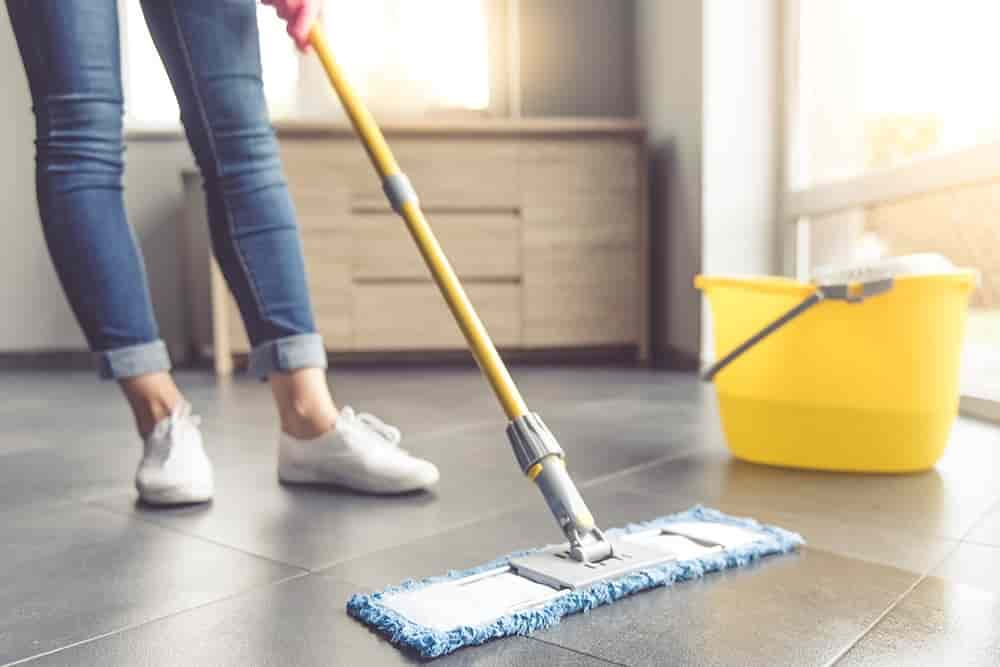
Coatings, when properly placed and maintained, have the potential to be an effective maintenance solution; however, this is only true for interior floor surfaces. However, if such coatings are not sufficiently or properly maintained, they may have a tendency to highlight traffic patterns as they wear away or become scratched, rather than aiding in the maintenance of ceramic tile floors in high traffic areas.
This is because such coatings tend to become more visible as they wear away or become scratched. Some coatings have the potential to peel in certain areas of the tile or to cause the tile to appear hazy or cloudy if they are not applied in accordance with the instructions provided by the manufacturer of the coating or if the tiles are not entirely clean at the time the coating is applied.
In addition, given that a coating must be removed and reapplied at regular intervals, the installation of such a coating can actually result in an increase in the cost of maintenance. It is possible that the ceramic tile floor will become damaged if the coating on it is routinely stripped away using abrasive mechanical equipment or harsh chemicals.
If a coating of any kind is being considered, the standard coating, such as floor wax, would be the one that would be the most suitable.
Wax does not leave the surface with a high gloss, which may be inappropriate, and it is easy to remove once it begins to wear away.
On the other hand, patterned encaustic tiles as well as painted or printed tiles with a design that has the potential to wear out should be protected with a penetrating sealer, also known as an impregnator. This is especially important in public buildings where there is a high volume of foot traffic.
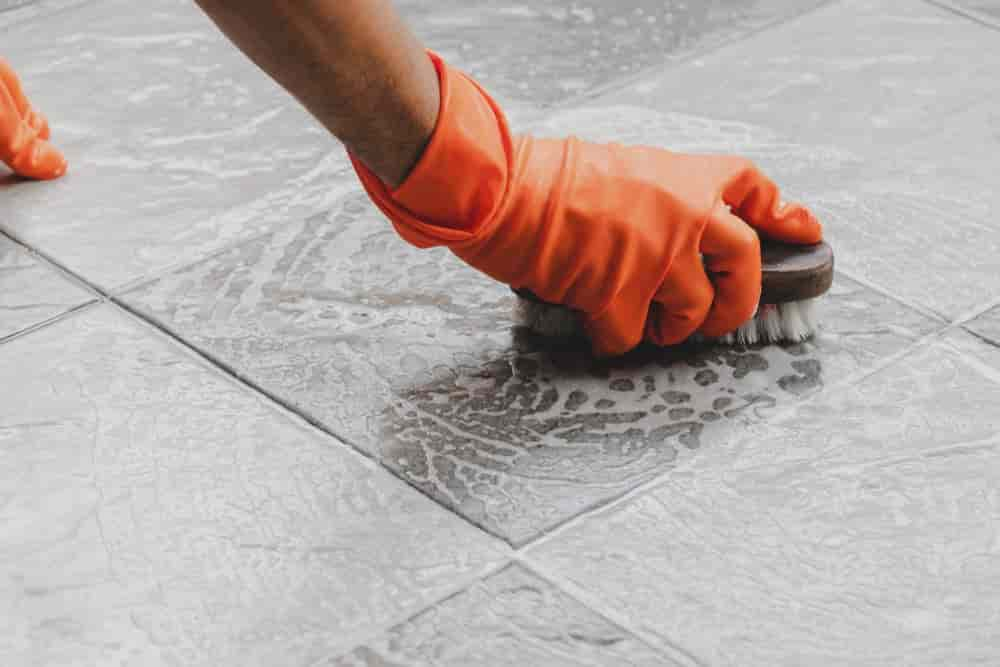
For instance, some manufacturers of brand-new replica encaustic tiles recommend applying a thick coat of sealant to both the new tiles and the tiles that were already in place. Impregnators, in contrast to other types of penetrating sealers, do not have the effect of changing the color of the tile’s surface and, once applied, are completely unnoticeable.
They have the potential to lower the porosity of the tile, which refers to its capacity to absorb water, and they give some degree of stain resistance for both the tile and the grout.
This could be of particular assistance to you if your flooring is of a lighter shade. Before deciding whether or not to apply an impregnator to a historic ceramic tile floor and before selecting the type of impregnator or product to use, it is common practice to seek the advice of a conservator or an expert on ceramic tiles.
Additionally, it could be essential to comply with certain ADA criteria for friction and safety (Americans with Disabilities Act). In accordance with the ADA Guidelines, ramps are required to have “a static coefficient of friction” of 0.8, while level surfaces are only required to have 0.6.
It’s possible that the historic ceramic tile flooring in some public buildings need to have a non-slip sealer or wax applied to them.
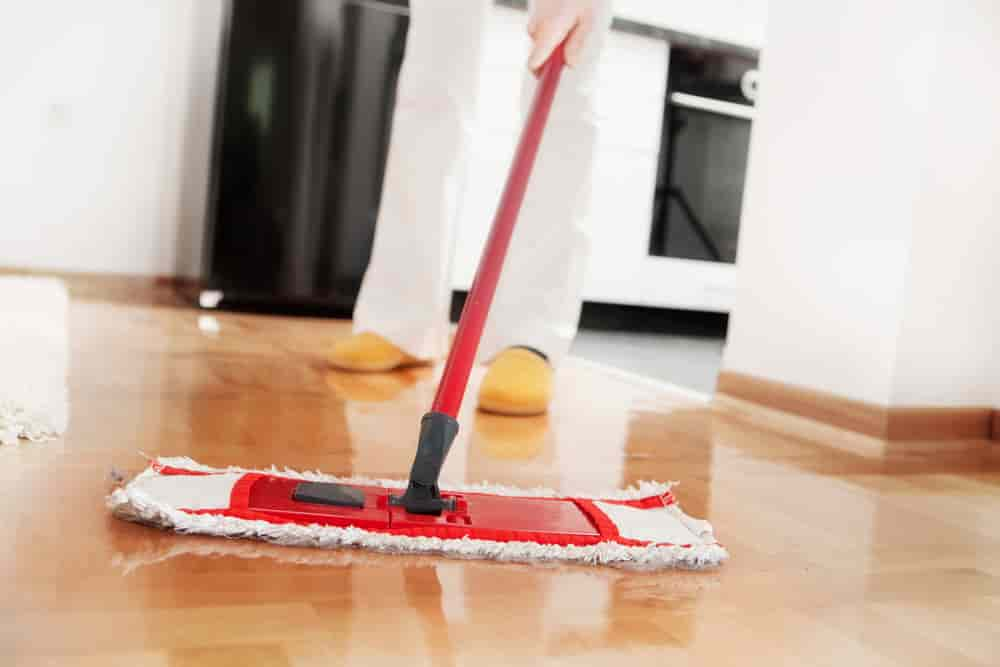
Even though they may give a floor surface an unconventionally glossy appearance, two-part coating techniques that are based on acrylic are often used nowadays on historic ceramic tile floors in many public buildings. This is partially because these techniques enable simple maintenance.
If it is decided to use a sealer, a product with a matte or dull finish rather than a high-gloss finish may be preferred to, or more suitable for, a historic ceramic tile floor. This is because a high-gloss finish may attract dust and dirt, which can damage the floor.
Temporary protection may be the most prudent course of action in certain scenarios until a more permanent solution can be established to the problem. In order to give short-term protection for an older ceramic tile floor, use floor mats in front of entrances and in other high-traffic locations.
The tile experts of our team are ready and eager to work with professional traders and importers around the world.










Your comment submitted.